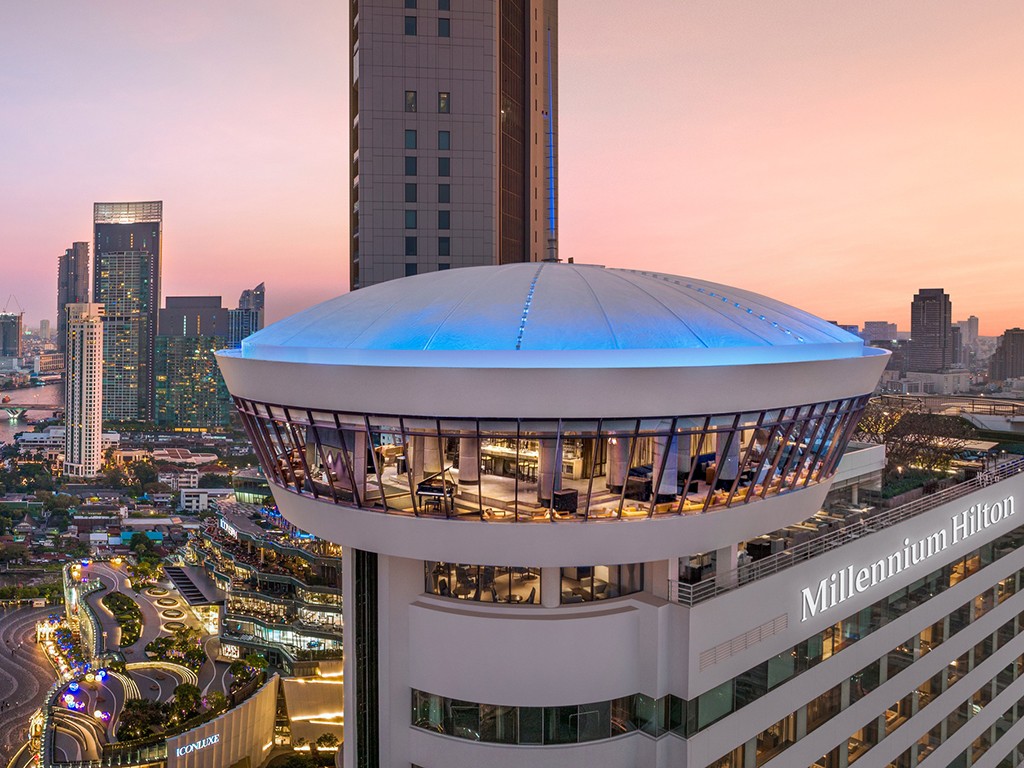
โบราณสถาน สมัยทวารวดี
 1428
1428
 รวมโบราณสถานสำคัญๆ ในสมัยทวารวดี ในประเทศไทย(ปัจจุบัน)
รวมโบราณสถานสำคัญๆ ในสมัยทวารวดี ในประเทศไทย(ปัจจุบัน)“ทวารวดี” อาณาจักร์โบราณ อายุเก่าแก่ตั้งแต่ก่อนพุทธศตวรรษที่ 12 (พ.ศ. 1100) ถึงพุทธศตวรรษที่ 15 (พ.ศ. 1400) แถบจังหวัดนครปฐมในปัจจุบัน เป็นสถานที่ค้นพบโบราณสถานและวัตถุหลักฐานมากที่สุด จึงคาดว่าเป็นจุดศูนย์รวมของอาณาจักรทวารวดี ครอบคลุมจังหวัดสุพรรณบุรี ราชบุรี ลพบุรี ไปจนถึงภาคเหนือ ภาคตะวันออกเฉียงเหนือบางส่วน และภาคใต้ที่จังหวัดสุราษฎร์ธานี จากหลักฐานทางโบราณคดีพบว่า ชาวมอญและละว้าในอาณาจักรทวาราวดีมีการติดต่อค้าขายทางทะเลอย่างกว้างขวาง เพราะมีเส้นทางออกสู่ทะเลมากมาย เมื่อความรุ่งเรืองของอาณาจักรทวารวดีค่อยๆเสื่อมลง ฝ่ายขอมจึงฉวยโอกาสเข้าตีเมือง อาณาจักรทวารวดีถึงกาลล่มสลายและตกอยู่ในอำนาจของขอมอย่างสมบูรณ์เมื่อราวพุทธศตวรรษที่ 16
ในสมัยอาณาจักรทวารวดีได้รับอิทธิพลทางศาสนาพุทธและฮินดู สถาปัตยกรรมแบบทวาราวดีที่หลงเหลือถึงปัจจุบันจึงมักเหลือเพียงซากฐานโบราณสถาน ดังเช่นที่พบในแหล่งโบราณคดีที่นครปฐม สุพรรณบุรี ราชบุรี กาญจนบุรี และลพบุรี มักก่ออิฐและใช้สอดิน บางแห่งมีการใช้ศิลาแลงบ้าง การก่อสร้างบริเวณฐานเจดีย์มักเป็นรูปฐานสี่เหลี่ยมผืนผ้า ย่อมุม และมีบันไดลงไปด้านล่าง ส่วนเจดีย์เป็นทรงระฆังคว่ำมียอดแหลมอยู่ด้านบน สันนิษฐานว่าเป็นแบบอย่างที่รับจากศิลปะอินเดียสมัยปาละ
กล่าวคือ สถาปัตยกรรมสมัยทวารวดีที่ยังคงหลงเหลืออยู่ในปัจจุบัน เป็นสถาปัตยกรรมที่สร้างขึ้นเนื่องในพุทธศาสนาเช่นเดียวกับประติมากรรม ได้แก่ โบสถ์ วิหาร เจดีย์ต่างๆ ซึ่งมักอยู่ในสภาพปรักหักพัง ส่วนใหญ่เป็นอาคารก่ออิฐสอดิน มีแผนผังแตกต่างกันออกไป เช่น ผังรูปสี่เหลี่ยมจัตุรัส สี่เหลี่ยมผืนผ้า หรือผังกลม อิฐที่ใช้มักมีขนาดใหญ่ มีแกลบผสม หรืออาจใช้ศิลาแลงบ้างในบางครั้ง ในจังหวัดนครปฐม ได้พบสถาปัตยกรรมสมัยทวารวดี อยู่หลายแห่งด้วยกัน ที่สำคัญเช่น เจดีย์พระประโทน เจดีย์จุลประโทน เจดีย์วัดพระเมรุ เป็นต้น
ตัวอย่างสถาปัตยกรรมทวารวดีเท่าที่มีการสำรวจทางโบราณคดี อาทิ วัดพระเมรุและเจดีย์จุลประโทน จังหวัดนครปฐม ปรากฏประติมากรรมดินเผาและปูนปั้นประดับอยู่รอบฐาน (ส่วนใหญ่เก็บรักษาไว้ที่พิพิธภัณฑ์สถานแห่งชาติ จังหวัดนครปฐม) และที่อำเภออู่ทอง จังหวัดสุพรรณบุรี เมืองคูบัว จังหวัดราชบุรี บ้านโคกไม้เดน จังหวัดนครสวรรค์ เมืองฟ้าแดดสูงยาง จังหวัดกาฬสินธุ์ และเมืองพระรถ ดงศรีมหาโพธิ จังหวัดปราจีนบุรี
The present Phra Pathom Chedi was built during the reign of King Rama IV in 1853, under his royal command, the new Chedi was constructed to cover the former Chedi of which the shape was of an upside down bell shape with a Prang top. It is assumed that the former Chedi dates back to the year 539 AD due to the fact that the upside down bell shaped Chedi has a similar style to the Sanchi Chedi in Ind...
read more
Si Thep Historical Park Some 130 kilometres south of Phetchabun on Highway No. 21, and with another 9 kilometres after a left turn, is the Si Thep Historical Park. Si Thep is an ancient town where many architectural structures still remain indicative of its past prosperity during the 11th-18th Buddhist Centuries. It was once the centre of contact between the Dvaravati kingdom in the Central Plain ...
read more
Si Mahosot Ancient Towns Located at Ban Khok Wat, Tambon Khok Peep, these sites were constructed in the Davaravati Period, with oval shape, and the area of about 700 Rai. There are moats, earth walls, and more than 100 interesting ancient venues. Most of the archeological materials are related to Hinduism. The most important site is in the center of town. Made from laterites, many materials found...
read more
This famous attraction of Ratchaburi is 8 kilometres from the town along the road to Amphoe Chom Bueng (Route No. 3078). The cave houses a bas-relief Buddha image, considered the oldest archaeological evidence of the Dvaravati period found in Ratchaburi . The figure is 2.5 metres high in the attitude of giving the first sermon....
read more
This ancient temple, locally called Wat Na Phra That, is located on the west bank of the Mae Klong River in the town. Its elegant prang or pagoda remains in good condition and was probably copied from Cambodia's Angkor Wat. The prang made of bricks and stones stands on a rectangular base with pathways around the cloisters. The outer stucco designs were made in the reign of King Borommakot of Ayutt...
read more
Ban Dong Lakhon Archaeological Site is the ruin of a large ancient city with a distinctive rectangular layout, surrounded by an earthen wall and a moat. This physical structure is characteristic of ancient cities during the Dvaravati period (11th-16th Buddhist centuries). Significant artifacts have been unearthed both within and outside the city limits, including pottery, glass beads, iron to...
read more
This ancient pagoda is made of red mortared brick and renovated in the Ayutthaya period. The pagoda is situated at Ban Koi, Moo 4, Tambon Na Phra That, Amphoe Panat Nikhom, Chonburi province.
The pagoda measures 3.5 metres on each side at the base and is 3.5 metres in height. It's beleived to contain relics, on Phra That, of former governors of Chonburi or sacred personages.... read more
The pagoda measures 3.5 metres on each side at the base and is 3.5 metres in height. It's beleived to contain relics, on Phra That, of former governors of Chonburi or sacred personages.... read more
Chan Sen Ancient City and Chan Sen Museum is in Mu 2 in Tambon Chan Sen. It is believed that in the Thawarawadi period, the city was surrounded by a moat with an earth mound. The city had a square shape but with rounded corners almost like a circle. The moat was about 20 meters wide. The area is now a waterlogged valley but traces of the moat can still be seen. The city is about 800 meters long an...
read more
Non Mueang Ancient Town The ancient town is located at Ban Na Pho, 80 kilometres from downtown Khon Kaen. Legends say the hill known as Non Mueange was the location of an ancient town. Acquiring a 216 rai area, the oval hill has double moats. Archaeologists have found sandstone Sema boundary markers in Dvaravati style in the town and nearby. Potsherds were scattered around. Some were painted in re...
read more
Phrathat Yakhu It is the largest Chedi in Fa Daet Song Yang. It is an octagonal-shaped Chedi, made of bricks. Evidence shows that it was constructed for three periods. The pedestal was in a resented square shape, with staircases at the four directions and decorated with stucco built during the Dvaravati period. The upper pedestal was in an octagonal shape, built on top of the original one and...
read more

































